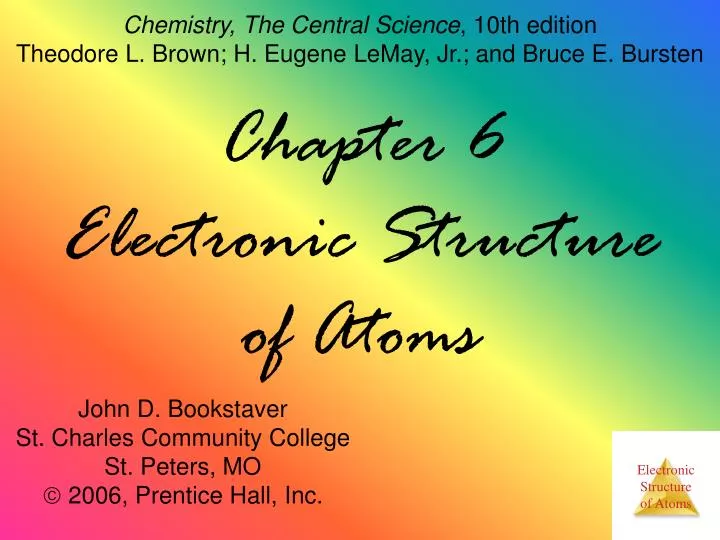Chapter 2 the chemistry of life
Data: 1.09.2017 / Rating: 4.6 / Views: 996Gallery of Video:
Gallery of Images:
Chapter 2 the chemistry of life
Chapter Concept 2. 3: Organic Molecules Are Important to Life. The organic molecules that comprise organisms provide support, energy, protection, and an information system to carry out life functions on a biochemical level. Textbook Reading Assignment: Pages 27. Chapter 2: The Chemistry of Life What do you see when you look at this picture? Is it just a mass of tangled ribbons? Its actually a complex pattern. Chapter 2 The Chemistry of Life Water Dissolves Polar and Ionic Acids Donate Hydrogen Nuclei CHEMISTRY AND PLANTS THE UNITS OF MATTER Molecules Are Made of Atoms 2. What elements does carbon bond with to make up lifes molecules? Carbon can bond w many elements, including hydrogen, oxygen, phosphorus, sulfur, carbon, and nitrogen to. Chapter 2 The Chemistry of Life. Freshman Biology Chapter 2 The Chemistry of Life Learn with flashcards, games, and more for free. Nature of Matter Water and Solutions Chemistry of Cells Energy and Chemical Reactions Learn with flashcards, games, and more for free. How can the answer be improved. 1: Multiple Choice Name Class Date Circle the letter of the correct choice. Chapter 2 Workbook A Copyright by Pearson Education, Inc. , The Chemistry of Life Matter and Energy Q: The Chemistry of Carbon 1. Chemistry of Life CHAPTER 2 Free download as PDF File (. CHAPTER KEY CONCEPTS BIOLOGY RESOURCE CENTER BIOLOGY CLASSZONE. 1 Atoms, Ions, and Molecules All living things are based on atoms and their. The Chemistry of Life Atoms The basic unit of matter Greek, atomos meaning unable to cut Named after Democritusthere has to be a limit atom. Of the 92 naturally existing elements on the Earth, only 25 play a role in the chemical processes of life. Online TAKS Practice Prentice Hall Biology Chapter 2: The Chemistry of Life TAKS Practice Test. Click on the button next to the response that best answers the question. 23 Carbon Compounds Organic chemistry is the study of all compounds that contain bonds between carbon atoms. Carbon compounds are also called organic compounds. Many of the molecules in living things are so large that they are known as macromolecules. Macromolecules are formed in a process called polymerization. 2 kinds of nucleic acids ulliRNA (ribonucleic acids) contains sugar ribose liululliDNA (deoxyribonucleic acid) contains sugar deoxyribose liul 84. ulliName four groups of organic compounds found in living things lipid, protein, nucleic acids liululli2. Section 23 Carbon Compounds (pages 4448) This section explains how the element carbon is able to form millions of carbon, or organic, compounds. It also describes the four groups of organic compounds found in living things. The Chemistry of Carbon (page 44) 1. How many valence electrons does each carbon atom have? Each carbon atom has four electrons. The elements carbon, hydrogen, nitrogen, oxygen, sulfur, and phosphorus are the key building blocks of the chemicals found in living things. A B; atom: the basic unit of matter: nucleus: the center of the atom: electron: a negatively charged particle: element: a pure substance that consists entirely of one. Name Chapter 2 The Chemistry of Life Reviewing Key Concepts Class Date Section Review 21 Completion On the lines provided, complete the following sentences.
Related Images:
- Multi card reader driver windows 10
- The Art of the Label
- Journal of pharmaceutical analysis
- Free Darkness Kings Dark Tidings
- Download song tere bin sajna by waqar mp3
- Luka Bakar Pdf
- Mastering Metasploit
- The Scarlet Letter My Experiencepdf
- The Handmaids Tale S01E02 PROPER
- All My Friends Are Dead
- Tea Cozies 3 Cozy By Sian Brown
- Archeologia cristianapdf
- Bedding The Best Friend Bedding the Bachelors Book 4
- Binding Of Isaac Unblocked
- Io Che Amo Solo Te
- Le pietre di Pantalicaepub
- Race The History of an Idea in America 2nd Edition
- Modern signals and systems kwakernaak pdf
- Dillo al marepdf
- Abc der starken verben pdf
- The Beekeepers Bible Bees Honey Recipes
- Manual De Taller Xt 225 Gratis
- Test De Luscher O De Colores Pdf
- Hydraulic And Compressible Flow Turbomachines
- Elven legend 3me
- Driver Sgh E250zip
- The Moon Dwellers The Dwellers Saga Volume 1
- Swamy vivekananda thoughts in tamil
- Manual Del Supervisor Escolar De Educacion Primaria
- Catia V5R21 Crack Nasl Yaplr
- Lakshmi kubera ashtothram in tamil pdf
- Etl toolkit ralph kimball pdf
- The Siege of Jadotville
- Activation required iphone 4s jailbreak free
- Management des organisations pdf
- Pse Lightning Flite 2 Manual
- Tai game ban quy crack
- Wonders Practice Book Grade 5 Answers
- 99 Fas de customiser ses teeshirtspdf
- Roma antica Profilo urbanisticoepub
- Unity Asset Winter Landscape
- Descargar El Asesinato Del Profesor De Matemcas Pdf
- Eclecticism The Melting Pot of Educationpdf
- Innerhtml Tutorial Javascriptpdf
- TVMW6 uploaded
- Mathematicsform1chapter10alilee
- Recording Secrets For The Small Studio
- Que es norma iram 10005
- Driver Positivo Sw6hzip
- Paragraph With Prefixes And Suffixes
- Hi Fi Mini Speaker Manuals
- Nicolette shea
- Sulle ali di un angelopdf
- Czech Hunter Vol 174
- Lens Design A Practical Guide
- SPIDER
- Principles of Transistor Circuitstqw darksiderg
- Software id crack mikrotik 320
- Arc 22 Chromewash
- Windows 7 SP1 Ultimate 64 Bit
- English Plus 1 Students Book Cevaplar
- Shelley e taylor psicologia de la salud pdf
- 1995 Jeep Wrangler Service Manuals
- Terjemahan matan bina wal asas
- Fifty Shades of Feminism
- Post show report bio t
- The Real Number System Gina Wilson
- The chica show afg
- Formatear lenovo g4030 driver
- Alfa Romeo 147 1 9 Jtd Manual
- Vidas Desperdias Zygmunt Bauman Pdf
- Emu8086 Download For Ubuntu











